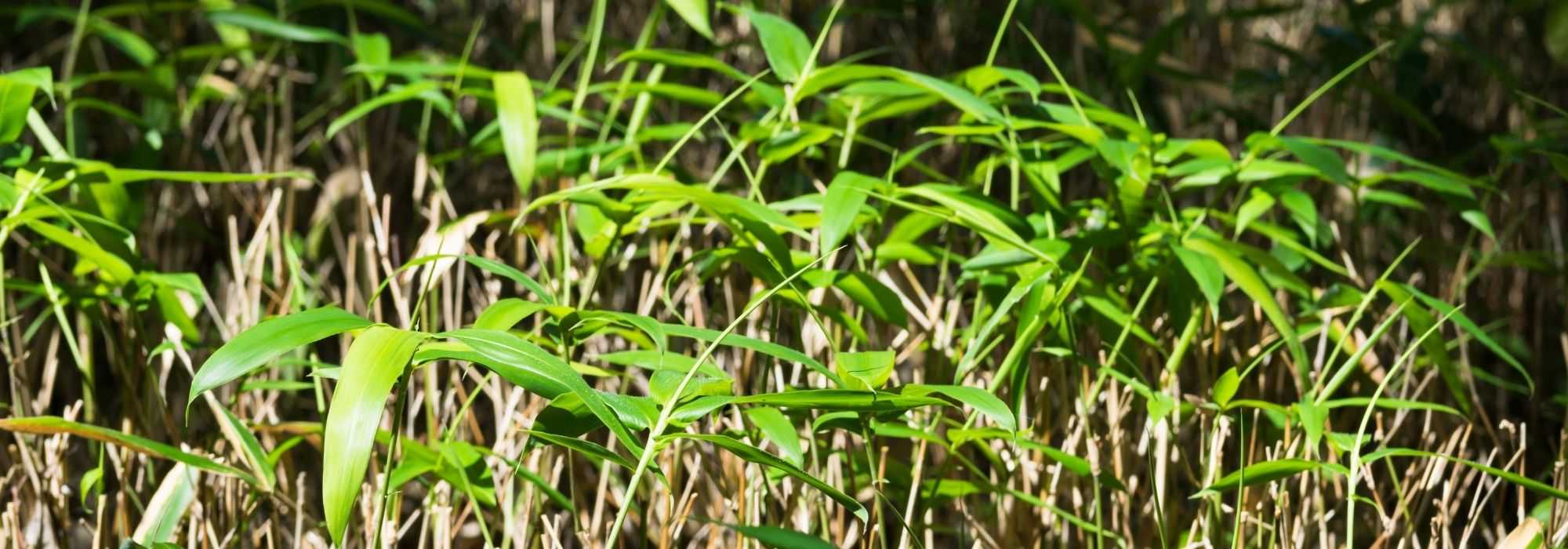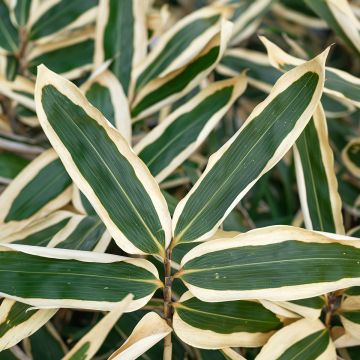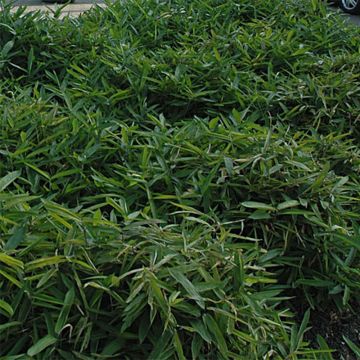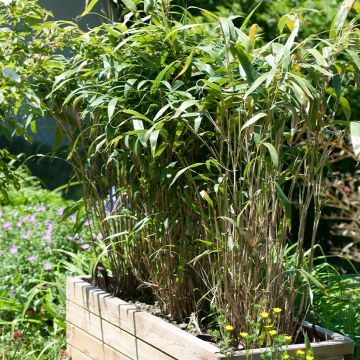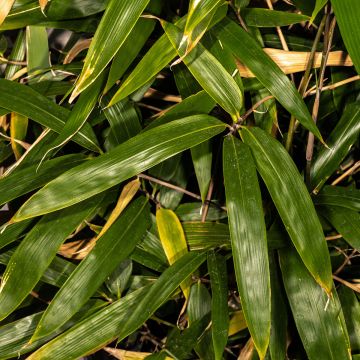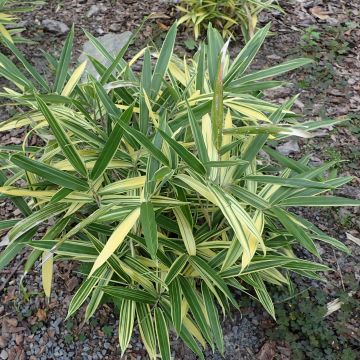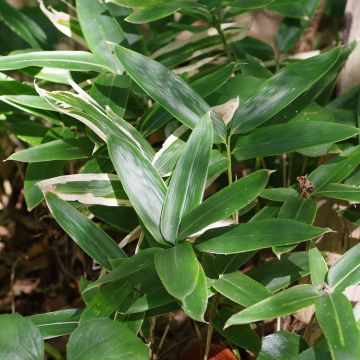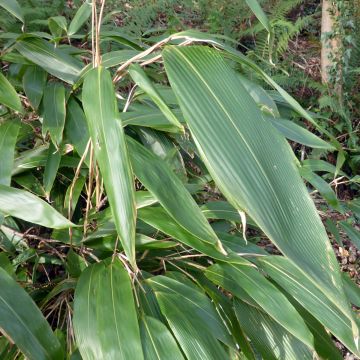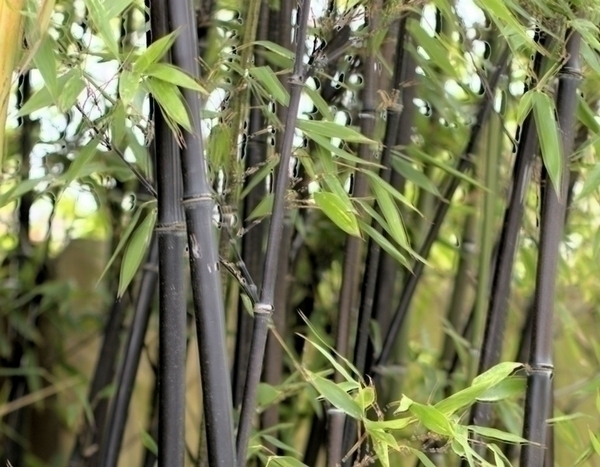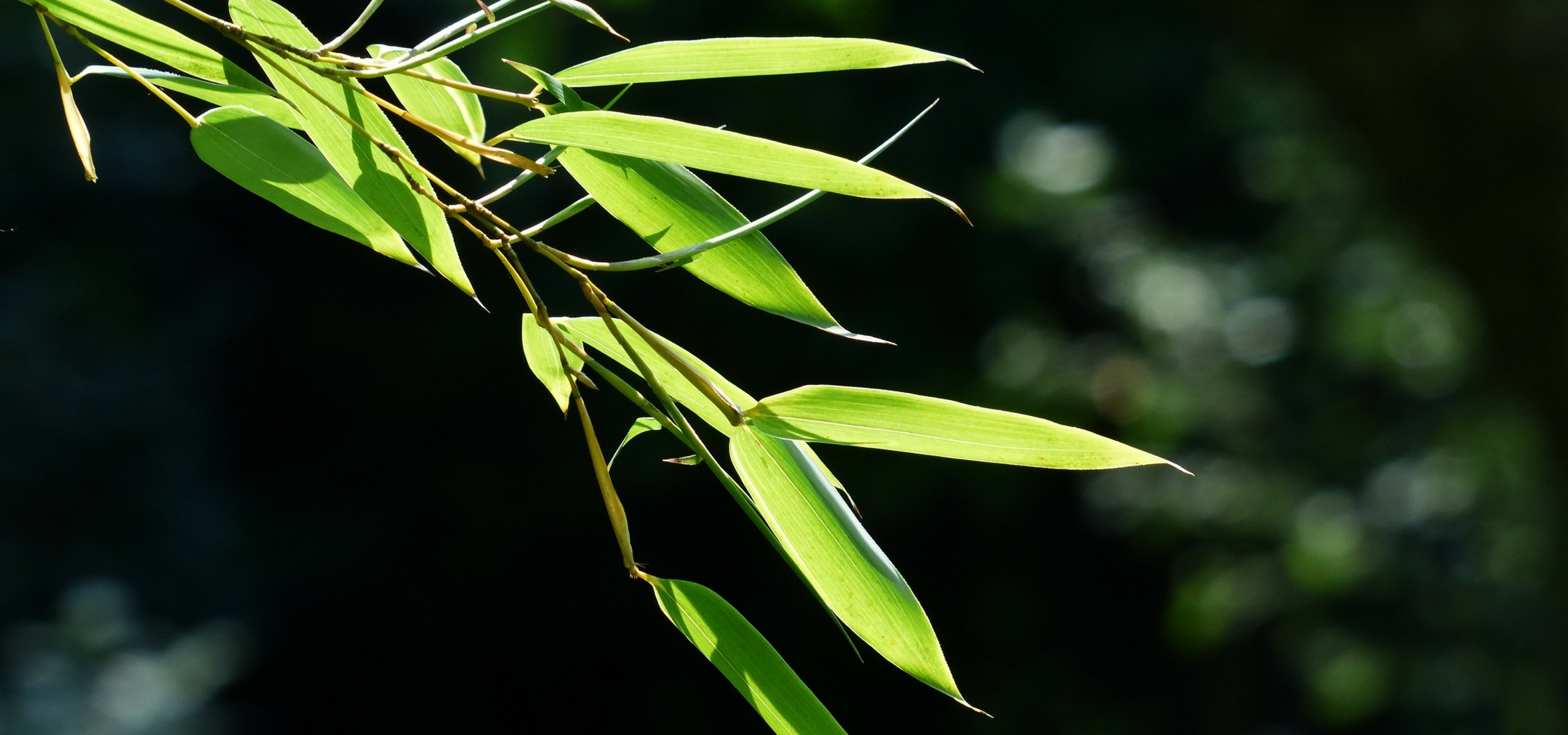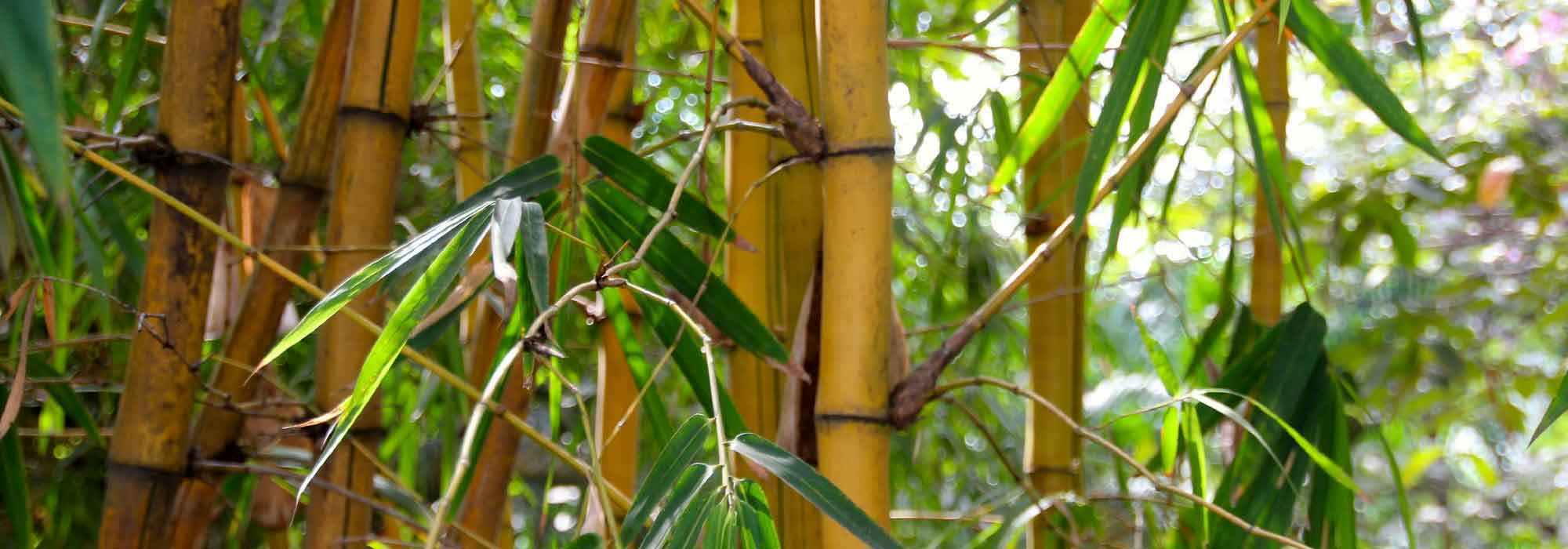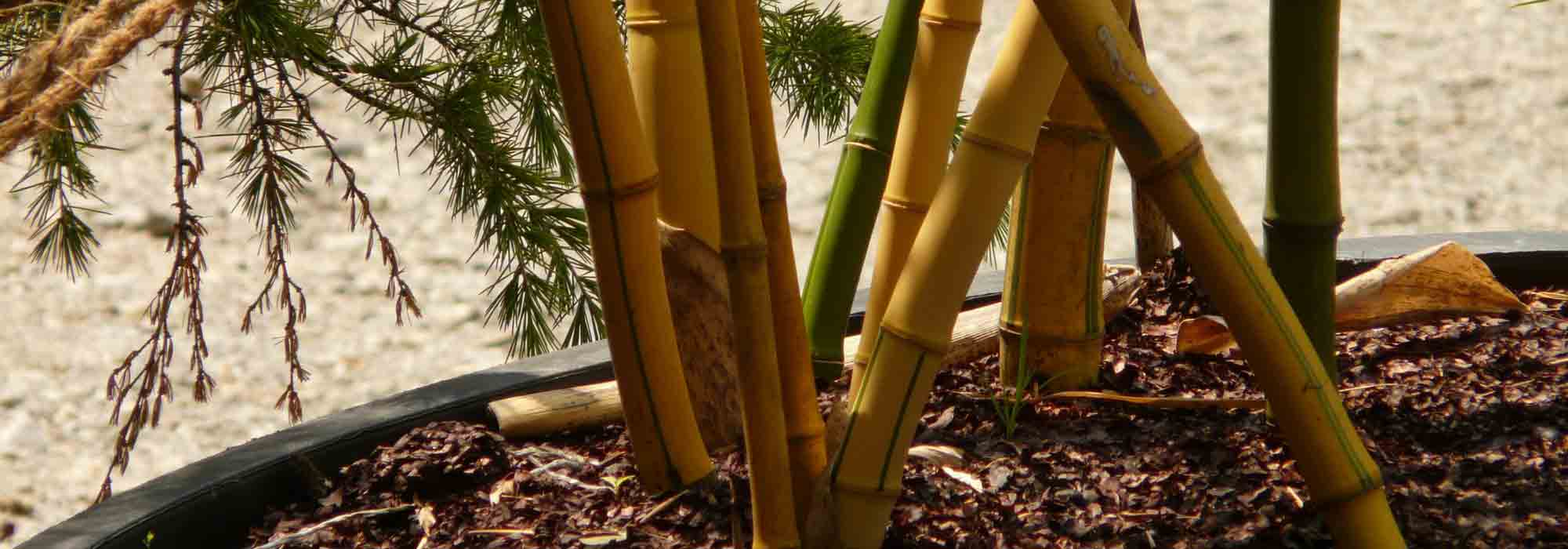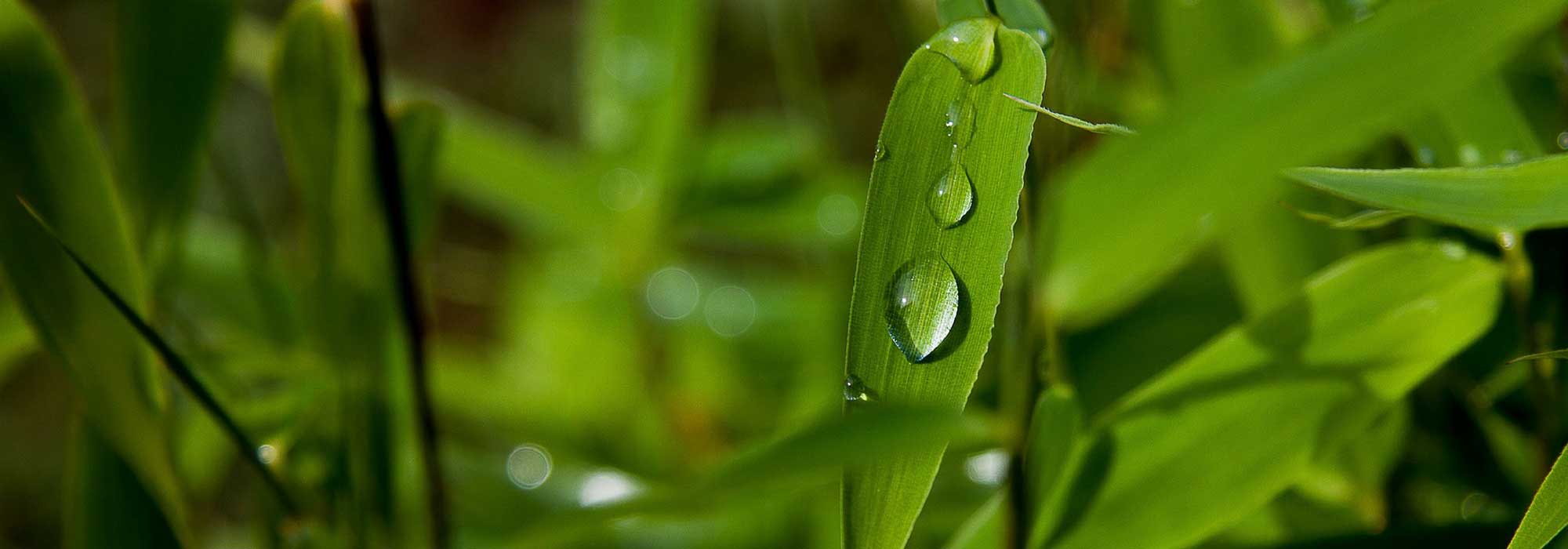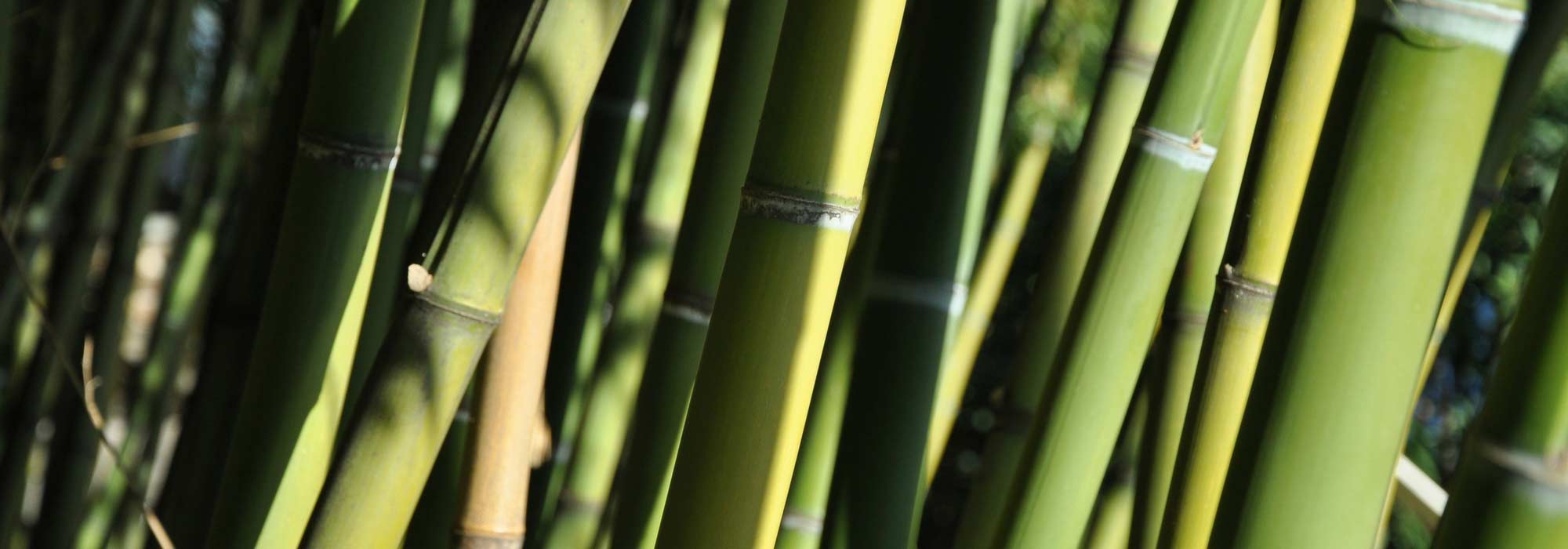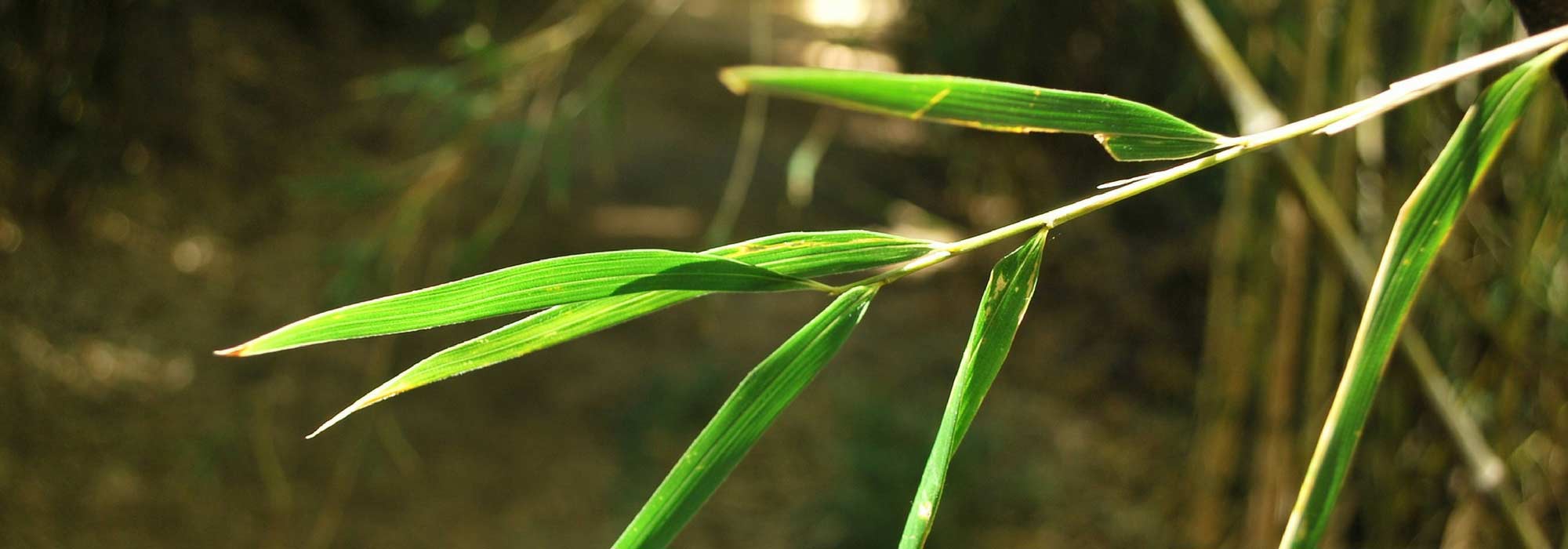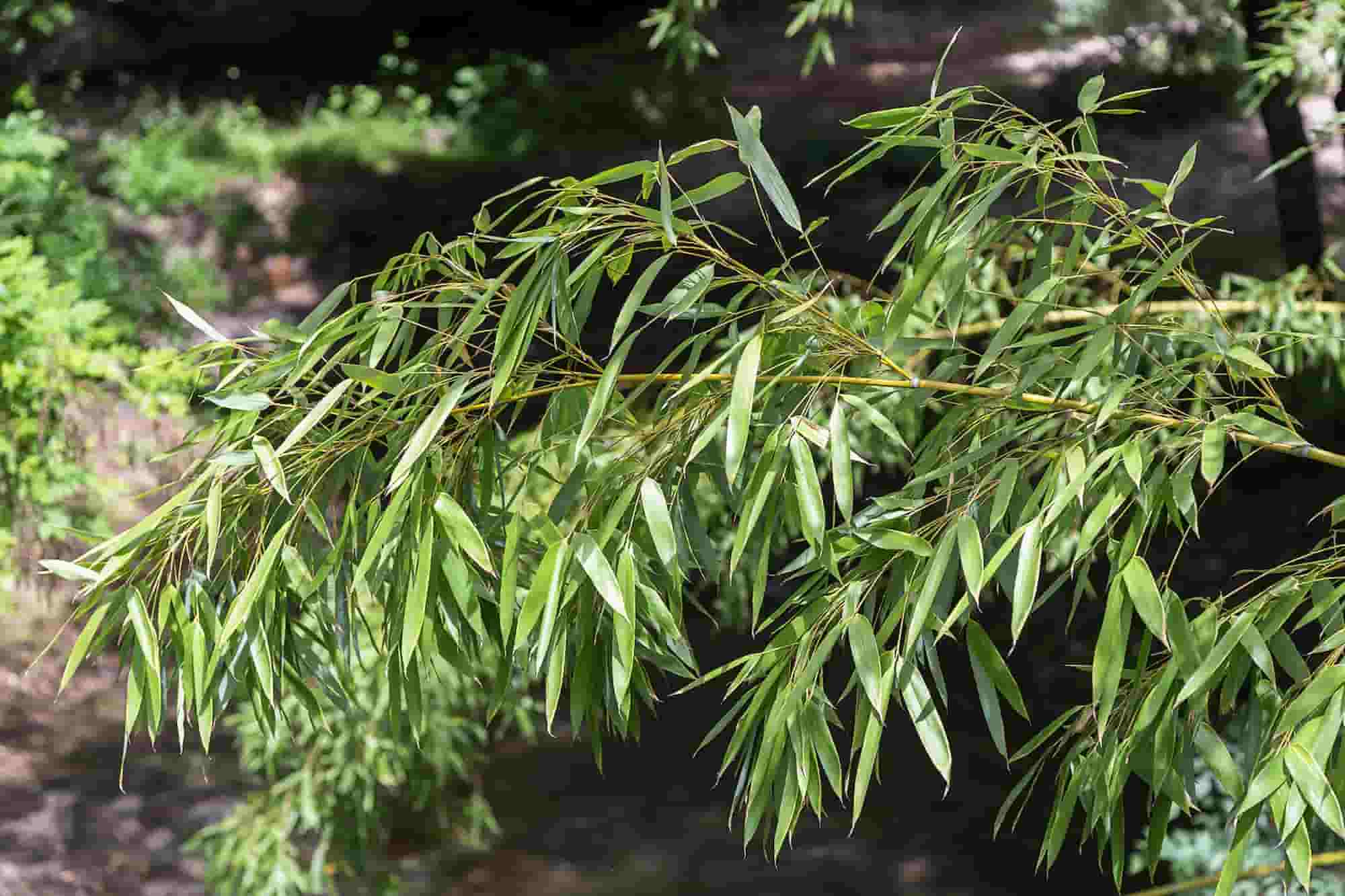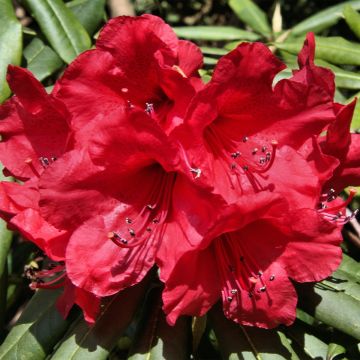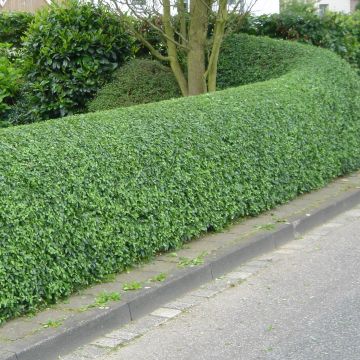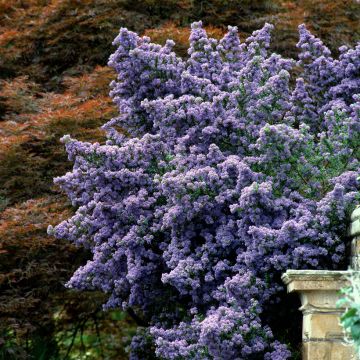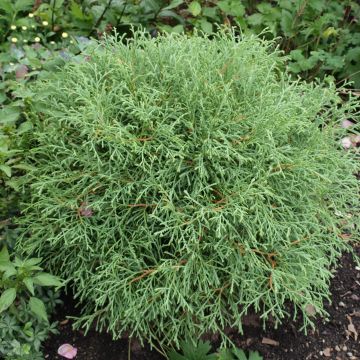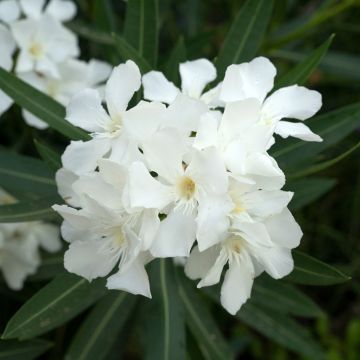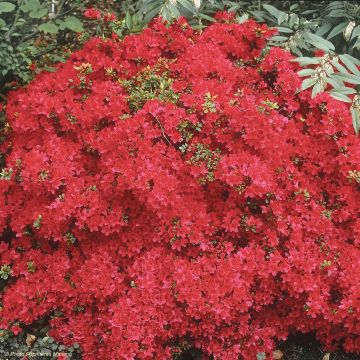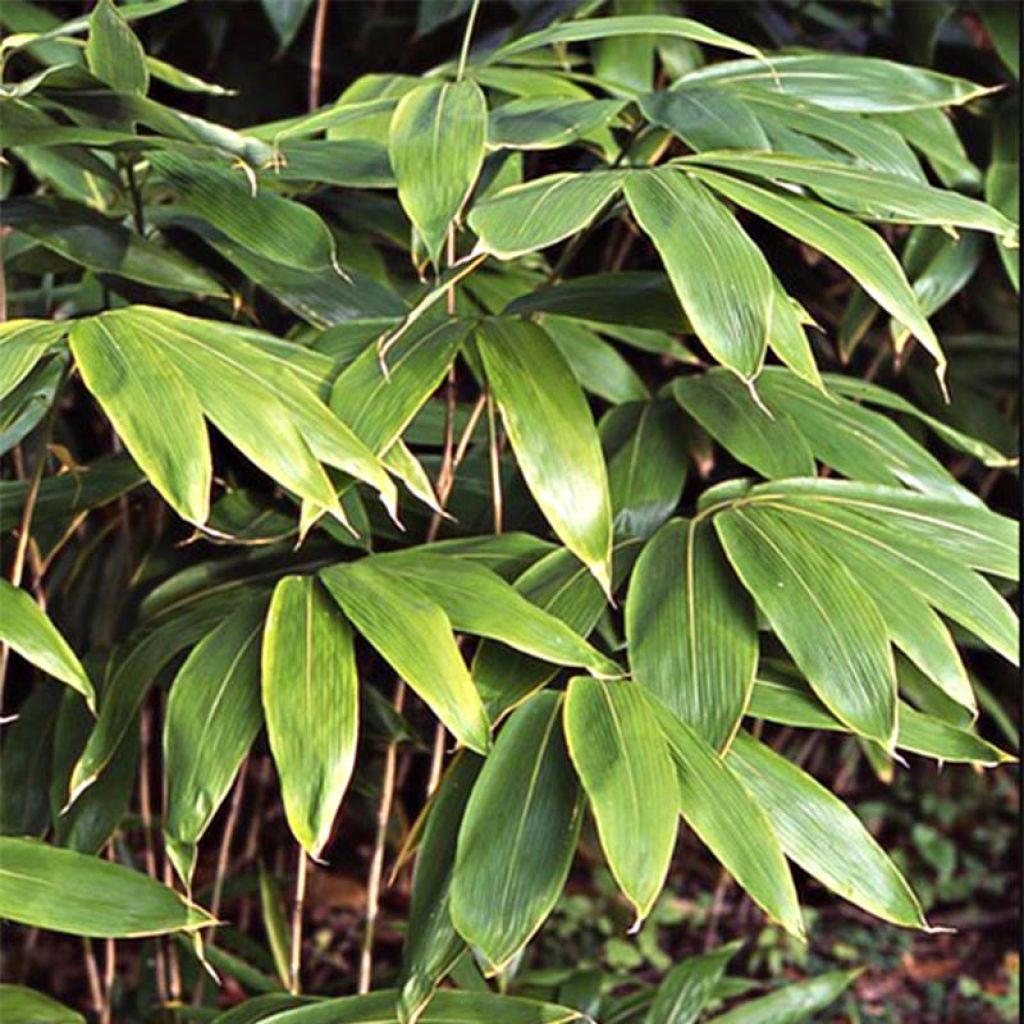

Sasa palmata Nebulosa - Dwarf Bamboo
Sasa palmata Nebulosa - Dwarf Bamboo
Sasa palmata Nebulosa
Bamboo
I too received it in a sorry state, I potted it but it kept withering, so I tried planting it in the ground. It's better, but the tips of the leaves are wilting. You mentioned pruning it, but at what level?
Joly, 19/02/2023
Special offer!
Receive a €20 voucher for any order over €90 (excluding delivery costs, credit notes, and plastic-free options)!
1- Add your favorite plants to your cart.
2- Once you have reached €90, confirm your order (you can even choose the delivery date!).
3- As soon as your order is shipped, you will receive an email containing your voucher code, valid for 3 months (90 days).
Your voucher is unique and can only be used once, for any order with a minimum value of €20, excluding delivery costs.
Can be combined with other current offers, non-divisible and non-refundable.
Home or relay delivery (depending on size and destination)
Schedule delivery date,
and select date in basket
This plant carries a 24 months recovery warranty
More information
We guarantee the quality of our plants for a full growing cycle, and will replace at our expense any plant that fails to recover under normal climatic and planting conditions.
Does this plant fit my garden?
Set up your Plantfit profile →
Description
The Sasa palmata Nebulosa is a vigorous small Japanese bamboo that hides a very hardy temperament under its tropical-plant like appearance. It forms a bush with a slightly loose habit, and can be recognized at a glance by its immense glossy leaves arranged in palmate fashion, resembling those of palm trees, as well as by its canes that turn black with age. However, the spreading nature of this variety should not exclude it as its expansion can be easily contained by removing young shoots on the periphery of the plant or through successive mowing. Hardy down to -18°C (0°F), 'Nebulosa' thrives everywhere, in both sunny and shady locations, in open ground and pots.
The Sasa palmata Nebulosa (synonyms Sasa paniculata 'Nebulosa', Arundinaria paniculata f.nebulosa) is a small-sized bamboo with a bushy habit and a rounded, slightly open silhouette. Perfectly adapted to harsh winters, it is native to Japan, where it grows along the coasts up to the Russian islands of Sakhalin and Kuriles. Like all bamboo, it belongs to the family of poaceae or grasses. Its genus name, Sasa, comes from the Japanese word zasa, a term used there to designate spreading bamboo. In the case of the Nebulosa cultivar, the canes are thin, olive green with light speckles, and turn blackish when ripe. They reach a height of about 2.50m (6.6ft) with a diameter of 1cm (0.4in) to 1.5cm (0.6in). With rapid growth, this Sasa spreads through shallow rhizomes, sometimes covering large areas. Its highly evergreen foliage consists of leaves that are 20 to 28cm (11in) long and 5cm (2in) wide. Arranged in palmate fashion at the end of the branches, these leaves are a beautiful light green colour with a glossy finish that is highly visible. The young shoots are edible, and the Japanese consume them after soaking them in brine, while its wide leaves are used to wrap certain traditional dishes. It has a hardiness of approximately -18°C (0°F).
Perfectly hardy and very vigorous, this bamboo thrives in deep, fertile soil that is not too dry, and can become invasive over the years. To contain its growth, we recommend using anti-rhizome barriers. Particularly decorative, it is well suited to Zen, Japanese, exotic, or contemporary gardens. Whether in full sun or shade, this bamboo quickly forms a medium-sized evergreen hedge that effectively protects against prying eyes. It can be planted en masse along a pathway in a large garden, used as a background plant in a flowerbed, or even as a large isolated clump. It also thrives in the understory, under the canopy of evergreen or deciduous trees. It adapts well to container or pot cultivation, allowing for the creation of intimate spaces on the terrace or balcony while providing an incredibly exotic tropical atmosphere throughout the winter.
Sasa palmata Nebulosa - Dwarf Bamboo in pictures
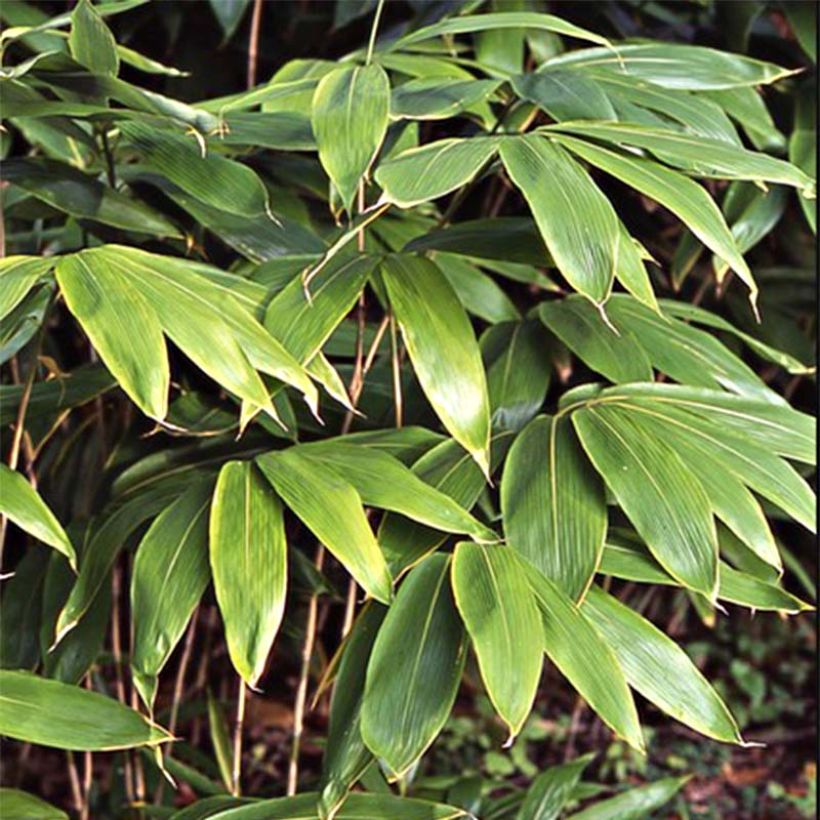

Plant habit
Foliage
Botanical data
Sasa
palmata
Nebulosa
Poaceae
Bamboo
East Asia
Other Sasa Bamboo
View all →Planting and care
The Sasa palmata Nebulosa can be planted in all exposures, it likes both sunny and cool, shady situations. It requires a fertile soil, relatively moist throughout the year, rich in humus, acidic to neutral, preferably with a clayey tendency and non-chalky. It is best planted in late summer to autumn, or even spring. Being relatively spreading, it is recommended to install a rhizome barrier at planting to limit its area of spread. The planting distance depends on how you will use your bamboo: for a mass planting, plan a spacing of 1.8 to 2.2 m (5.9 to 6.5ft) between each plant. For a hedge, this distance is reduced to 1 to 1.4 m (3.2 to 4.5ft). Perfectly hardy, it can withstand temperatures as low as -18°C (-0.4°F).
For pot cultivation, use a well-draining potting soil and provide organic fertilizer twice a year to prevent leaf yellowing due to excess water and lack of nutrients. propagation can be done by cutting the rhizome or dividing the clump.
This bamboo will benefit from being pruned every year in late winter or early spring to encourage the development of completely new foliage.
Planting period
Intended location
Care
Planting & care advice
-
, onOrder confirmed
Reply from on Promesse de fleurs
Similar products
Haven't found what you were looking for?
Hardiness is the lowest winter temperature a plant can endure without suffering serious damage or even dying. However, hardiness is affected by location (a sheltered area, such as a patio), protection (winter cover) and soil type (hardiness is improved by well-drained soil).

Photo Sharing Terms & Conditions
In order to encourage gardeners to interact and share their experiences, Promesse de fleurs offers various media enabling content to be uploaded onto its Site - in particular via the ‘Photo sharing’ module.
The User agrees to refrain from:
- Posting any content that is illegal, prejudicial, insulting, racist, inciteful to hatred, revisionist, contrary to public decency, that infringes on privacy or on the privacy rights of third parties, in particular the publicity rights of persons and goods, intellectual property rights, or the right to privacy.
- Submitting content on behalf of a third party;
- Impersonate the identity of a third party and/or publish any personal information about a third party;
In general, the User undertakes to refrain from any unethical behaviour.
All Content (in particular text, comments, files, images, photos, videos, creative works, etc.), which may be subject to property or intellectual property rights, image or other private rights, shall remain the property of the User, subject to the limited rights granted by the terms of the licence granted by Promesse de fleurs as stated below. Users are at liberty to publish or not to publish such Content on the Site, notably via the ‘Photo Sharing’ facility, and accept that this Content shall be made public and freely accessible, notably on the Internet.
Users further acknowledge, undertake to have ,and guarantee that they hold all necessary rights and permissions to publish such material on the Site, in particular with regard to the legislation in force pertaining to any privacy, property, intellectual property, image, or contractual rights, or rights of any other nature. By publishing such Content on the Site, Users acknowledge accepting full liability as publishers of the Content within the meaning of the law, and grant Promesse de fleurs, free of charge, an inclusive, worldwide licence for the said Content for the entire duration of its publication, including all reproduction, representation, up/downloading, displaying, performing, transmission, and storage rights.
Users also grant permission for their name to be linked to the Content and accept that this link may not always be made available.
By engaging in posting material, Users consent to their Content becoming automatically accessible on the Internet, in particular on other sites and/or blogs and/or web pages of the Promesse de fleurs site, including in particular social pages and the Promesse de fleurs catalogue.
Users may secure the removal of entrusted content free of charge by issuing a simple request via our contact form.
The flowering period indicated on our website applies to countries and regions located in USDA zone 8 (France, the United Kingdom, Ireland, the Netherlands, etc.)
It will vary according to where you live:
- In zones 9 to 10 (Italy, Spain, Greece, etc.), flowering will occur about 2 to 4 weeks earlier.
- In zones 6 to 7 (Germany, Poland, Slovenia, and lower mountainous regions), flowering will be delayed by 2 to 3 weeks.
- In zone 5 (Central Europe, Scandinavia), blooming will be delayed by 3 to 5 weeks.
In temperate climates, pruning of spring-flowering shrubs (forsythia, spireas, etc.) should be done just after flowering.
Pruning of summer-flowering shrubs (Indian Lilac, Perovskia, etc.) can be done in winter or spring.
In cold regions as well as with frost-sensitive plants, avoid pruning too early when severe frosts may still occur.
The planting period indicated on our website applies to countries and regions located in USDA zone 8 (France, United Kingdom, Ireland, Netherlands).
It will vary according to where you live:
- In Mediterranean zones (Marseille, Madrid, Milan, etc.), autumn and winter are the best planting periods.
- In continental zones (Strasbourg, Munich, Vienna, etc.), delay planting by 2 to 3 weeks in spring and bring it forward by 2 to 4 weeks in autumn.
- In mountainous regions (the Alps, Pyrenees, Carpathians, etc.), it is best to plant in late spring (May-June) or late summer (August-September).
The harvesting period indicated on our website applies to countries and regions in USDA zone 8 (France, England, Ireland, the Netherlands).
In colder areas (Scandinavia, Poland, Austria...) fruit and vegetable harvests are likely to be delayed by 3-4 weeks.
In warmer areas (Italy, Spain, Greece, etc.), harvesting will probably take place earlier, depending on weather conditions.
The sowing periods indicated on our website apply to countries and regions within USDA Zone 8 (France, UK, Ireland, Netherlands).
In colder areas (Scandinavia, Poland, Austria...), delay any outdoor sowing by 3-4 weeks, or sow under glass.
In warmer climes (Italy, Spain, Greece, etc.), bring outdoor sowing forward by a few weeks.






























